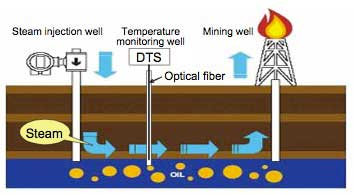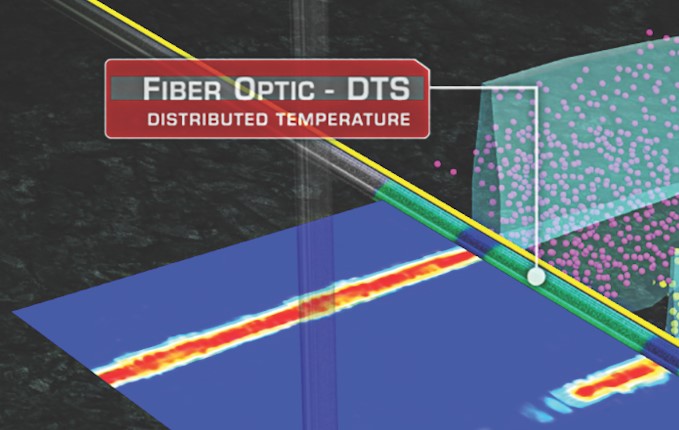Sensing Temperature In A Distributed Way
Distributed temperature sensing is the use of a whole fiber optic cable as a sensor to detect temperature changes in pipes, electrical systems, power cables etc. DTS technology is of particular interest to electrical industry since these fiber optic sensors are not affected by electromagnetic waves. So, how does this technology work? How do we sense the difference? The simple answer is that we send a laser light in specific wavelength down a fiber optic cable and then measure the shift of the wavelength of the backscattered laser light. Since the change in temperature changes the molecular structure of the fiber optic cable; the wavelength of the reflected light will be different.

Distributed Temperature Sensing
What is the working principle behind the scenes for Distributed Temperature Sensing? A coherent laser pulse is sent inside the cable and then the detector collects the reflected light. Fiber optic cables are generally made of silicon dioxide (SiO2) which is in the form of a crystal. The temperature change in the environment changes the structure of the crystal and when the laser light hits these spots; the laser light scatters back; which is called the Raman Scattering. This scattered light is actually composed of three parts: the part that has the same wavelength with the original laser which is called the Rayleigh band. This band is typically used for distributed acoustic sensing (DAS). The second part is the Brillouin scattering which is produced by the interaction of laser light with the acoustic phonons in the fiber. This part is used for distributed strain sensing (DSS). The third part is the Raman Stokes and Anti-Stokes shift which we use for distributed temperature sensing. The ratio of the Stokes and anti-Stokes shift intensities gives the local temperature.




